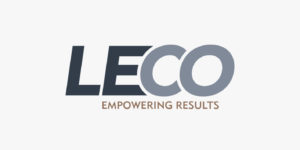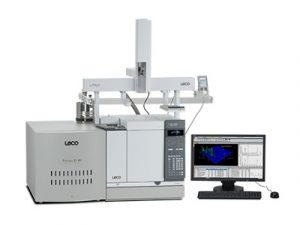Key Partner Resources: LECO Knowledge Base – GCxGC & TOFMS

Here at Anatune, we regularly publish Application Notes detailing our latest innovations, methods and analytical solutions. We are also lucky to be partners with instrument manufacturers who also offer a wealth of valuable scientific content. In this edition of Key Partner Resources, we explore the LECO Knowledge Library and delve into the GCxGC and GCxGC-TOFMS content.
Comprehensive two-dimensional gas chromatography – GCxGC – is a technique that has been around for over 25 years. Research has shown the benefits of GCxGC in a wide variety of applications: e.g. environmental monitoring, metabolomics, petroleum, food safety analysis, and fragrance profiling. The benefits include increased peak capacity, structured two-dimensional chromatograms, and sensitivity enhancement.
The merits of GCxGC as a separation science are clear, and the resources below offer detailed insight into how it benefits laboratory workflows and analytical results.
GCxGC and TOFMS Resources available from LECO

LECO Application Notes:
LECO Application Note 409: Analysis of Persistent Organic Pollutants in Complex Matrices by Gas Chromatography—High Resolution Time-of-Flight Mass Spectrometry
Persistent Organic Pollutants (POPs) are halogenated organic compounds used as pesticides, flame retardants, and for the manufacture of a variety of commercial goods. They include polychlorinated dibenzo-p-dioxins (PCDDs), dibenzofurans (PCDFs), polychlorinated biphenyls (PCBs), and polybrominated diphenyl ethers (PBDEs). Unfortunately, these compounds bioaccumulate, and health and environmental effects have led to their regulation in many countries. This Application Note describes how development of instrumental Gas Chromatography—High Resolution Time-of-Flight Mass Spectrometry techniques can provide a comprehensive analysis of environmental samples in a minimal amount of time to significantly improve POP analysis.
LECO Application Note 619: Determination of Pesticides in Tomato by GCxGC-TOFMS
This Application Note describes a GCxGC-TOFMS workflow for the detection and quantitation of targeted pesticides in peeled tomatoes. The need for a comprehensive two-dimensional chromatographic method has been dictated by the huge amount of matrix interferences encountered in the sample, even after a traditional QuEChERS extraction followed by a clean-up step. In fact, the GCxGC technology significantly increases the separation efficiency, and ultimately allows a better separation of the target and non-target analytes from the matrix interferences. This, in combination with LECO’s Pegasus BT 4D sensitivity, fast acquisition and deconvolution benefits, easily reached the required limit of detections for all the pesticides investigated.
LECO Application Note 626: Determining MOSH/MOAH with GCxGC-TOFMS
LECO’s Pegasus BT 4D GC×GC-TOFMS system can help to unveil the complexity of contaminated food samples, providing superior chromatographic resolution and identification capabilities. In addition to the increased separation power and identification confidence, LECO ChromaTOF software’s “Classifications” feature can be routinely applied to quickly gather information from the samples about the presence of a specific chemical class. This Application Note describes a GCxGC-TOFMS workflow to separate and identify the MOSH/MOAH fractions from the biogenic substances normally occurring in a spice sample, namely cumin.
LECO Application Note 617: Cannabis Analysis: Hemp Potency Determination
Gas Chromatography-Mass Spectrometry (GC-MS) is a preferred method for qualitative and quantitative analysis of complex botanicals because of its excellent chromatographic resolution, sensitivity, and increased selectivity. The Time-of-Flight Mass Spectrometry variation of this technology (GC-TOFMS), together with modern processing software with deconvolution capabilities, results in cleaner signals for accurate identification and quantitation regardless of closely eluting compounds and interfering complex sample matrix. In this Application Note it is utilised to analyse the potency of hemp.
LECO Application Note: Fast Pesticide Residue Analysis in Food with a Benchtop GC-TOFMS
Sample throughput including data processing is an important factor to consider when performing routine analyses. In this Application Note the speed and power of TOFMS was used to shorten the runtime of a standard pesticide residue analysis without any loss of analytical performance. The goal was for the same number of spiked pesticides to be detected under both analytical methods. LECO’s deconvolution algorithm maintained exceptional peak fidelity of the qualitative analysis, while the Target Analyte Find feature was used ed for robust quantitation and to establish method detection limits for organonitrogen pesticides spiked in QuEChERS strawberry extracts.
DOWNLOAD LECO Application Notes from the LECO Knowledge Library here
LECO Pegasus BT 4D GCxGC TOFMS
Other LECO Literature:
Solutions for Food Analysis: Determining Quality and Safety
Recent scares in the safety of our foods have put new pressure on countries and producers to ensure the integrity of food supply remains intact. Imported, exported, and domestic food products are under global scrutiny, and addresses these issues with instruments that can analyze and verify the quality of dairy products, meats, cereals, poultry, beer, and wine. From raw foods to final consumer-ready products, read this LECO guide and discover instruments which offer fast, accurate testing and productivity-enhancing features like autoloaders.
Research Hype to Practical Analysis: Benefits of Comprehensive TwoDimensional Gas Chromatography (GCxGC) for a Routine Laboratory
Comprehensive two-dimensional gas chromatography (GCxGC) benefits include increased peak capacity, structured two-dimensional chromatograms, and sensitivity enhancement. Multiple analyte classes can be combined into a single analysis to save instrument and sample preparation time. Manual review time for non-target screening methods can be reduced by creating a better library match leading to faster, more confident peak identification. Sample characterization is improved which increases confidence in decisions based on analytical results, and the extra resolution allows the use of more economical detectors, like the flame ionization detector (FID) or electron capture detector (ECD).
DOWNLOAD LECO Literature from the LECO Knowledge Library here
Important LECO E-Seminars
-
E-Seminar: Theory and History of GCxGC by J.M.D. Dimandja, Spelman College
-
E-Seminar: GCxGC Made Simple and Easy-to-Use by Mark Merrick, LECO Corporation
-
E-Seminar: Time-of-Flight GC-MS Overview by Joe Binkley, LECO Corporation.
DOWNLOAD LECO E-Seminars from the LECO Knowledge Library here
ChromaTOF-GC: GCxGC deconvolution, visualization, and reporting
VIEW the LECO Instrument and Software Range HERE
CONTACT US us to find out more about the LECO Instrument range or to discuss your analytical challenges



